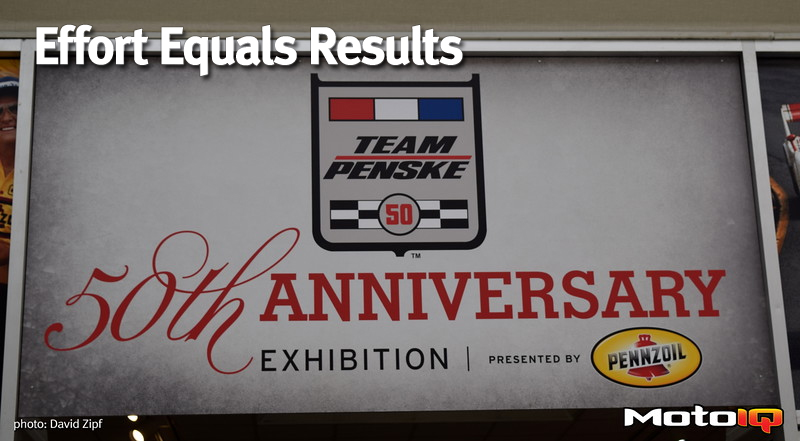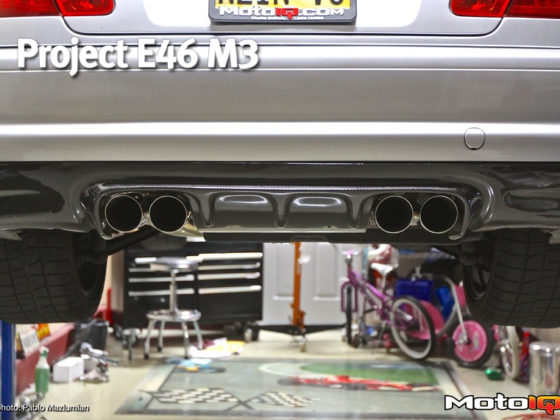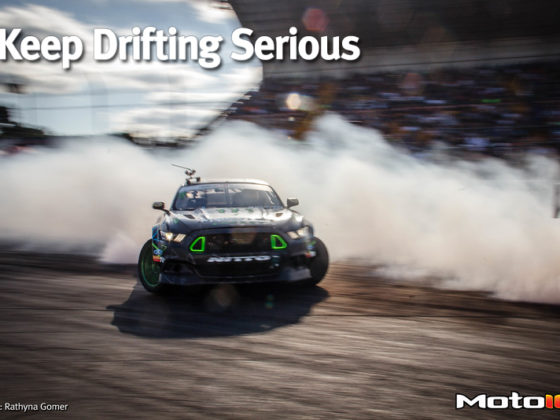,
 These Porsche drivers were brave men. Check out the oil reserve tank sitting right next to the driver’s leg. A leak would easily cause burns and in an accident this is a definite fire hazard! You can’t see it in this shot, but underneath Donohue’s left elbow is the fuel tank, another major fire hazard. On top of that, the chassis and driveline are a mix of aluminum and magnesium…not exactly a recipe for structural integrity or fire retardance. Rupture resistant fuel cells were still not mandatory in most forms of racing (the FIA would not develop them until after Niki Lauda’s 1976 fire), so the impetus to keep the car on the track and off the wall was high. Also notice how far forward the driver is placed to offset the weight of the heavy flat-12. The driver’s feet are in line with the front axle. A frontal collision would generally mean mangled feet and legs, a common problem for old racers. The only reason the cockpit needed to be this widewas to fit the driver’s massive “attachments.”
These Porsche drivers were brave men. Check out the oil reserve tank sitting right next to the driver’s leg. A leak would easily cause burns and in an accident this is a definite fire hazard! You can’t see it in this shot, but underneath Donohue’s left elbow is the fuel tank, another major fire hazard. On top of that, the chassis and driveline are a mix of aluminum and magnesium…not exactly a recipe for structural integrity or fire retardance. Rupture resistant fuel cells were still not mandatory in most forms of racing (the FIA would not develop them until after Niki Lauda’s 1976 fire), so the impetus to keep the car on the track and off the wall was high. Also notice how far forward the driver is placed to offset the weight of the heavy flat-12. The driver’s feet are in line with the front axle. A frontal collision would generally mean mangled feet and legs, a common problem for old racers. The only reason the cockpit needed to be this widewas to fit the driver’s massive “attachments.” The wing takes up the entire width of the bodywork! Even though ground effects were understood, many racecars did not use them. The 917 could not use ground effects as that wide flat-12 takes up any free space for a tunnel! The sidepods are full of ancillary hardware and there is no room for underbody aerodynamics.
The wing takes up the entire width of the bodywork! Even though ground effects were understood, many racecars did not use them. The 917 could not use ground effects as that wide flat-12 takes up any free space for a tunnel! The sidepods are full of ancillary hardware and there is no room for underbody aerodynamics.  A footnote on sportscars and Penske: Penske Racing won the 1969 24 Hours of Daytona with a Lola MkIII. After Can-Am rule changes in 1974 (to lower speeds and reduce the risk of fire), Penske left sports car racing. He would return in 2006 with a pair of Porsche backed LMP2 cars to tackle the ALMS series and LeMans. The team won the 2006 and 7 LMP2 championships, winning the majority of the races in their class and occasionally winning overall, beating the faster LMP1s. The ALMS team was disbanded and reformed into the crew that now services Will Power’s IndyCar. Sadly, none of the Porsche RS Spyders Penske raced in ALMS were on display, so please accept this image from Wikipedia instead..
A footnote on sportscars and Penske: Penske Racing won the 1969 24 Hours of Daytona with a Lola MkIII. After Can-Am rule changes in 1974 (to lower speeds and reduce the risk of fire), Penske left sports car racing. He would return in 2006 with a pair of Porsche backed LMP2 cars to tackle the ALMS series and LeMans. The team won the 2006 and 7 LMP2 championships, winning the majority of the races in their class and occasionally winning overall, beating the faster LMP1s. The ALMS team was disbanded and reformed into the crew that now services Will Power’s IndyCar. Sadly, none of the Porsche RS Spyders Penske raced in ALMS were on display, so please accept this image from Wikipedia instead.. Just behind the 917s was the OG Penske Car: the PC1. This was Penske’s first foray into Formula 1 as an owner and constructor (he competed in the first two USGPs at Watkins Glen as a driver). In 1973, Penske established a racecar factory in Poole, England and for the 1974 Canadian GP, the Penske PC1 made its debut. This car is almost comically small, like a roller skate with an engine and wing bolted to it. Like most cars of its day, this car is a fully aluminum monocoque. Aerodynamics are simple and again, pre-ground effects. Wings front and rear are the only additions for downforce: the rest of the traction is made by gigantic tires.
Just behind the 917s was the OG Penske Car: the PC1. This was Penske’s first foray into Formula 1 as an owner and constructor (he competed in the first two USGPs at Watkins Glen as a driver). In 1973, Penske established a racecar factory in Poole, England and for the 1974 Canadian GP, the Penske PC1 made its debut. This car is almost comically small, like a roller skate with an engine and wing bolted to it. Like most cars of its day, this car is a fully aluminum monocoque. Aerodynamics are simple and again, pre-ground effects. Wings front and rear are the only additions for downforce: the rest of the traction is made by gigantic tires. A Cosworth DFV, the standard engine of the day, powers the PC1. The sidepods only hold water radiators for the engine. In the rear, fluid coolers for the engine and transmission oils sit beside the control arms. The rear suspension is mounted to the transmission and the front of the engine. The transmission is a Hewland FG400 Mk9, which featured a magnesium case and mounting points for inboard brake discs (which can be seen just in front of the oil cooler). Inboard brakes enjoyed a short period of success as they greatly reduce unsprung weight. However cooling them is more difficult and if an axle fails, that wheel no longer has brakes to slow it. The airplane sized rear wing is also mounted directly to the Hewland box.
A Cosworth DFV, the standard engine of the day, powers the PC1. The sidepods only hold water radiators for the engine. In the rear, fluid coolers for the engine and transmission oils sit beside the control arms. The rear suspension is mounted to the transmission and the front of the engine. The transmission is a Hewland FG400 Mk9, which featured a magnesium case and mounting points for inboard brake discs (which can be seen just in front of the oil cooler). Inboard brakes enjoyed a short period of success as they greatly reduce unsprung weight. However cooling them is more difficult and if an axle fails, that wheel no longer has brakes to slow it. The airplane sized rear wing is also mounted directly to the Hewland box.  Next to a mannequin, you can really see how small the PC1 is. Again, it is an aluminum monocoque design, not very sturdy or safe, yet it could be seen tearing through the New York countryside at 150 MPH. The PC1 raced at Canada and Watkins Glen in 1974 and campaigned in a partial season in 1975. It proved to be both fragile and hard to handle, DNFing in 5 of its 12 races. If it did finish, it results were usually mid-field. The PC1’s best result came at Anderstop in 1975, coming home in 5th, the only points the PC1 ever scored. The later Penske PC4 would actually win the 1976 Austrian GP. This is Penske’s only F1 win and as of today, is still America’s last constructor’s win in F1. Get to it Haas!
Next to a mannequin, you can really see how small the PC1 is. Again, it is an aluminum monocoque design, not very sturdy or safe, yet it could be seen tearing through the New York countryside at 150 MPH. The PC1 raced at Canada and Watkins Glen in 1974 and campaigned in a partial season in 1975. It proved to be both fragile and hard to handle, DNFing in 5 of its 12 races. If it did finish, it results were usually mid-field. The PC1’s best result came at Anderstop in 1975, coming home in 5th, the only points the PC1 ever scored. The later Penske PC4 would actually win the 1976 Austrian GP. This is Penske’s only F1 win and as of today, is still America’s last constructor’s win in F1. Get to it Haas!


